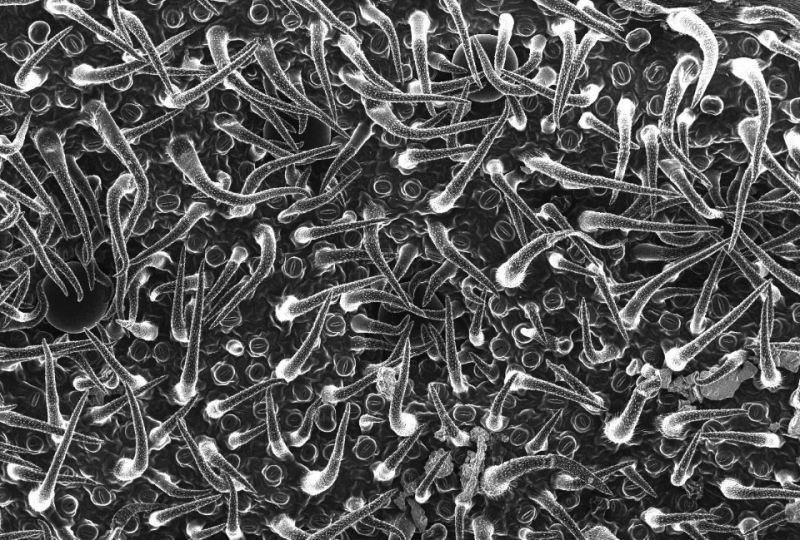Image: Stomatal design principles in synthetic and real leaves

This black and white image is an SEM micrograph of the underside of a blue giant hyssop, a plant in the mint family.
The spiky bits are hairs. The round blobs being engulfed by the hairs (look closely, there are several) are glands holding essential oils which are secreted to deter insects and animals, and to attract pollinators. The small sausage-shaped openings scattered across the surface are stomata; these pores are used for gas exchange, allowing carbon dioxide in for photosynthesis.
The image accompanied a submission to Journal of the Royal Society Interface called 'Stomatal design principles in synthetic and real leaves' which we published online this month. The paper looks at stomata geometry, combining biomimetic experiments and theory, to understand the link between environmental factors, such as light, water and carbon dioxide availability, and plant productivity relative to stomatal design.
Professor Kaare Jensen who headed the research explains more:
"To get carbon dioxide for photosynthesis plants open their stomata, and because air contains relatively little amounts of carbon (0.04%) this suggests that plants need many pores, perhaps covering its entire surface, to get enough carbon dioxide in.
However, a big problem is that water also evaporates out through these pores. In fact, more than one hundred water molecules are lost to the atmosphere for every carbon collected. This is the reason why water is the single most important factor limiting agricultural yields.
It has been known for a long time that the number and size of stomata pores vary between species, and because of this trade-off, the effect has been attributed to various environmental factors.
Our experiments on synthetic leaves reveal a crucial missing component in our understanding: stomatal pore spacing is tuned to be just on the edge of interaction with neighboring pores. Sitting at this inflection point maximizes control over photosynthesis, but does not generally minimize water loss, and this has remained unchanged for more than 325 million years, despite large fluctuations in carbon dioxide concentrations."
More information: Maciej A. Zwieniecki et al. Stomatal design principles in synthetic and real leaves, Journal of The Royal Society Interface (2016). DOI: 10.1098/rsif.2016.0535
Journal information: Journal of the Royal Society Interface
Provided by The Royal Society



















